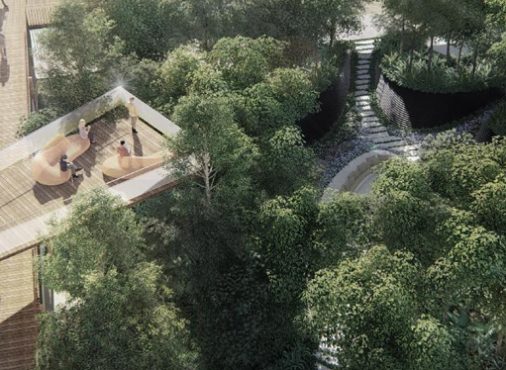Mumbai, India’s financial hub with a strong real estate market, currently draws global investors. As the city grows and changes, future apartment developments will continue offering attractive prospects for experienced and newbie investors. These attributes combine modern features and high investment yields.
Looking at the significant benefits of investing in these projects, we can easily learn why Mumbai remains one of the most promising areas for real estate investment in the expanding Indian property market. Let’s delve deeper.

Strategic Location Benefits
Mumbai has several prime locations and easy access to various significant areas of the city.
- Juhu: Thanks to its transport network facilities, Juhu is home to a number of celebrities. Due to its lights and activity, the area is regarded as one of the most sought-after in the market for real estate ventures.
- Worli: This exclusive residential area has a beautiful seafront and overlooks the Arabian Sea. The availability of exclusive condominium projects and the site’s location make Worli one of Mumbai City’s best properties.
- Malabar Hill: This gated community is located at the southern end of Mumbai. It comprises mansions, sophisticated apartments, and, most importantly, waterfronts.
- Powai: With an amalgamation of scenic beauty and splendid infrastructure facilities, Powai has emerged as one of the most preferred residential localities. It also boasts modern facilities and a balanced lifestyle, all suitable for families and the working population.
- Chembur: This suburb in the city’s eastern part has become a preferred residential area. Its tremendous growth and improved transport infrastructure have led to highly valued property rates.
The accessibility of properties to existing and proposed metro stations, highways, and coastal roads is significantly improving, increasing the demand for property ownership. This enhances the residents’ quality of life and the investment value of the area.
High Return on Investment (ROI)
Real estate has been experiencing an upward trend in terms of growth, as evidenced by Mumbai’s market. Prime residential properties have been notably more potent due to economic improvement, increased need, and continuing construction work.
New figures show that prime residences have risen more than 11% yearly in the first three months of 2024, placing Mumbai amongst the leading cities for luxury residential property price growth. The sector’s projected 9.2% CAGR from 2023 to 2028 underscores its promising outlook.

Rental Yield Opportunities
The rental market in Mumbai has proved to be the most buoyant, especially in the newer buildings. There has been increased demand for redeveloping properties over the years, with property owners searching for temporary spaces while conducting their renovation projects.
The rental growth of Mumbai’s premium gated society will be at a range of 5-9% by the end of 2024, signifying stability to the segment. Despite this slowdown, the rental market remains attractive, supported by:
- High demand for data centre space
- In 2023, the luxury segment saw a steep 75% increase in first-home sales, and its share of total residential sales was 50%.
- Organised retail real estate stock was estimated to reach 82 million sq. ft. by 2023, with a projected 28% growth from its current level.
Quality of Construction and Design
Mumbai is known for its modern and luxury residential properties. Let’s examine the top amenities and some of the reputed developers in Mumbai.
Modern Architecture and Amenities
Modern homes built in the recent past within Mumbai’s western suburbs are a class apart. These developments provide large living spaces with marvellous views and good communal planning. Key features include:
- Smart home technologies that improve the living standards and comfort of the inhabitants.
- Sustainability and energy-saving solutions
- Functionality as well as great looks that come with unique design.
- A harmonious blend of structural planning of open balconies and vegetation.
- Contemporary fitness and gym centres and swimming pool
- Front yard gardens, lawns and backyards where children play their games.
Reputable Developers
It is essential to select the right builder while investing in the real estate sector of Mumbai. Some of the top developers known for their quality and reliability include:
- Rustomjee: The renowned developers of cutting-edge properties such as Rustomjee La Vie and Rustomjee Crown.
- Lodha Group: The Lodha Group is known for undertaking projects like Lodha Bel Air and Lodha Bellagio.
- Oberoi Realty: Some projects include Oberoi Enigma, Oberoi Sky City, etc.
- Godrej Properties: Some acknowledged projects include Godrej Bliss and Godrej Five Gardens.
- K Raheja Corp: Raheja Imperia and K Raheja Modern Vivarea are the two significant buildings that developers have developed.
Read Also: 10 Best Places to Buy a Property in Mumbai in 2024
Ongoing and Planned Infrastructure Projects
- Mumbai Trans Harbour Sea Link (Atal Setu):
This 22-km link, of which 16 are for Freight, is the busiest highway link within the country’s borders. It runs 5 km over the sea and links Sewri in Mumbai to Nhava-Sheva on the mainland.
- Navi Mumbai International Airport:
Scheduled to be developed to reduce the burden on the present Chhatrapati Shivaji Maharaj International Airport. This will foster the connectivity needed to unlock new economic corridors in the region.
- Mumbai Metro Aqua Line 3:
It shall also provide an anchoring scope of superior intra-city connectivity and thus should contribute to easing traffic commotion and increasing assumed public hauling.
- Mumbai Coastal Road:
This project aims to ease traffic in the western suburbs and provide faster north-south connectivity by building a 29.2 km freeway along Mumbai’s western coastline.
- Versova Bandra Sea Link (VBSL):
This proposed link, which connects to the existing Bandra-Worli Sea Link, aims to further reduce travel time along Mumbai’s western coast.
Rising Property Values
Mumbai also points to the market’s resilience. Prime residential has risen by 11%. In the same year, it reached 5% year-on-year in the first quarter of 2024.
Key Insights:
- Continued Growth: According to Gulam Zia of Knight Frank India and other industry professionals, developers expect prices to rise even higher in the subsequent quarters.
- Affordability Outlook: Adani Realty’s development of several new residential and commercial projects in 2024 projected increased affordability for the property.
- Premium Locality Pricing: A few of the most prominent centres, such as Dadar East, Bandra East, and Matuanga, have generic rates of Rs. 31,000, Rs. 28,335 and Rs. 29,900 per sq. ft., respectively.
- High Liveability: These premium localities that have been identified have a livability score of 9. The ‘mental component score’ gives access to a healthy life and reflects how much the respondents’ quality of life can approach the best possible value of 8 or above.
- Attractive Rental Yields: The current market trends support a healthy annual rental yield of 3.85%.
Read Also: The Role of Location in Mumbai Real Estate Investment Decisions
Government Initiatives and Policies
Let us have a look at some of the important government initiatives that promote real estate investments.
- Pradhan Mantri Awas Yojana (PMAY):
PMAY is the Indian government’s affordable housing scheme, which aims to fulfil the vision of “Housing for All” by 2022. The scheme provides interest subsidies, affordable housing projects, financial assistance, construction, and improvements.
- Credit-Linked Subsidy Scheme (CLSS):
Under the PMAY, CLSS aims to subsidise interest rates so that home seekers belonging to economically weaker sections and low-income groups can afford homes easily.
- Pradhan Mantri Gramin Awas Program (PMGAY):
This is a housing project for the rural sector that provides an interest rate rebate of 3% for home loans of up to Rs. 2 lakhs for the construction of new dwelling units/home extensions or for the renovation of existing dwelling units under the rural housing sector.
- Rajiv Gandhi Awas Yojana (RAY):
Originally established in 2009, RAY aims to eliminate the population of slum inhabitants in India and regulate additional infringements and violations of construction rights.
Conclusion
Real estate in Mumbai offers excellent investment prospects due to better Infrastructure growth, government support, and wonderful market statistics. The potential of new locations to yield high returns and positive market sentiment will result in sustained growth of the city’s property market.
So, are you looking to invest in a residential property in Mumbai? Visit Rustomjee residential properties today and get your dream home!
FAQs
- Why invest in upcoming projects rather than completed ones?
Home buyers have far more choices in an under-construction property than in a finished project. They also have many house options, while limited options are available for ready-to-move-in properties.
- What are the key factors to consider when investing in new developments?
When investing in new developments, key factors to consider are location, property type, current market, reputation of the developer, estimated or projected percentage returns, generation of cash flows, available financing, infrastructural development, and expected future demand for the property in the area.
- Are there tax benefits associated with investing in residential properties?
Yes, you can derive a tax advantage from investing in residential properties in India. Some of these include expenses for interest on home loans under section 24(b) and repayment of the principal amount under section 80C.
- How can I assess the credibility of a developer?
To assess a real estate developer’s credibility, you can investigate their reputation and work history, confirm their legal operations, assess their financial viability, speak to their previous clients, and tour their finished projects.
- What are the typical risks of investing in upcoming projects?
The typical risks of investing in upcoming projects include the possibility of project failure, market volatility, low liquidity, and the lack of a track record for past performance.








